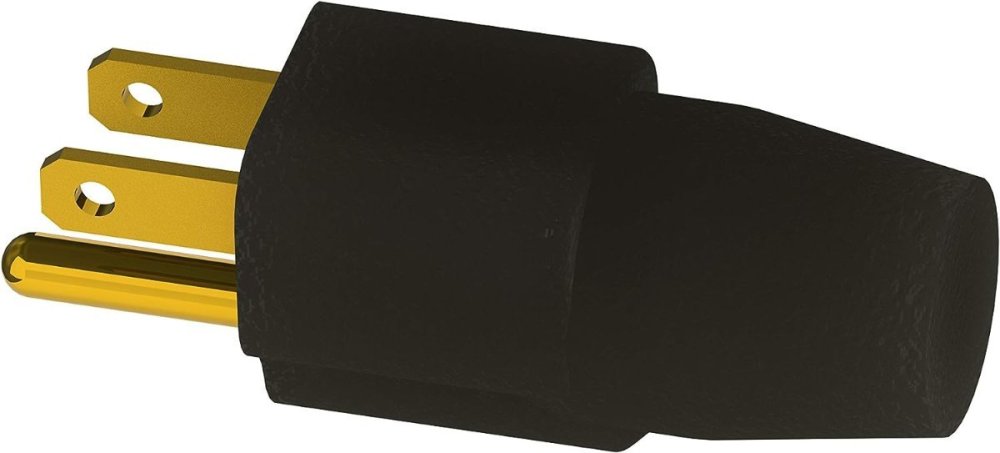-
Posts
902 -
Joined
-
Last visited
-
Days Won
17
Everything posted by Rivernerd
-
As I expect you know, towing capacity does not tell the whole story, since it presumes nothing but a 150 lb. driver in the tow vehicle. Payload is what counts when both towing a trailer and hauling gear in the pickup. That said, your 2500 lb. payload capacity should allow you to add a 300 lb. bed slide without pushing the payload limit, presuming you don't carry too much other stuff. The Elite II tongue weight takes up between 500 and 600 lbs. of your payload capacity. Add 300 lbs. for the bed slide and you are still not over 1K lbs., leaving about 1500 lbs. capacity for passengers and other stuff. A 300 lb. bed slide in my 2019 Tundra, with only 1450 lb. total payload, would not leave enough capacity to work for us.
-
Maybe if the truck bed slide significantly reduces your truck payload capacity. How much does it weigh, installed? I note that Vector-Lanham's tow vehicle is a 2016 Nissan Titan. Just guessing, but payload capacity towing an Elite II could be an issue....?
-
Propane is odorless. But, the odorant that is added to propane, mercaptan, settles in the bottom of propane tanks. When you get down to the last bit of fuel in a tank, the odorant is more concentrated, so you smell it much more readily when using a propane appliance. That could explain the strong odor you "washed" out. Like you, we have had similarly confusing readings from the gauge on our stock two-tank regulator. That is why we now have a Mopeka tank sensor installed on the bottom of each tank. They have proven reliable for us. $66.29 for the pair from Amazon. Tanks levels are reported to a smart phone via bluetooth. I also carry a handheld combustible gas detector in our Hull #1291. The one pictured below, $27 right now from Amazon, has worked well for me. It is very sensitive. The siren sound it emits grows louder the closer you place it to a combustible gas leak. Should one of our noses detect the odor of mercaptan, I can quickly isolate the leak and address it. The great majority of leaks in RV propane lines occur at fittings, which loosen over time as you drive down the road. Often, all that is needed is to tighten a fitting. Not only is it worth the peace of mind, but even if only used once, it is less expensive than a motel stay!
-

XANTREX FREEDOM XC PRO 3000 INVERTER/CHARGER
Rivernerd replied to HDRider's topic in Mechanical & Technical Tips
Our Hull #1291 has only one positive and one negative lead from the battery bank to a bus bar, then to the inverter. My understanding from Oliver service is that ours was one of the first units manufactured with that "new" bus bar. Trailers built earlier than ours had more than one positive and one negative lead leaving the battery bank/battery box. Could Ronbrink's trailer have more than one positive/negative power lead exiting the battery box, and could that be the source of the 12V draw when the 200A blade circuit breaker is tripped? -

XANTREX FREEDOM XC PRO 3000 INVERTER/CHARGER
Rivernerd replied to HDRider's topic in Mechanical & Technical Tips
True....but.... As rich.dev instructs, leave the silver button on the inverter OUT (off), so you can control the inverter from the silver button on the remote. My remote is mounted about eye height just forward of the pantry on the street side. Leave the silver button on the remote OUT (off) unless you are not connected to shore power and wish to run a 120V appliance (like the microwave or a blender) on inverted power. Push the silver button on the remote IN (on position) to turn on the inverter to supply 120V power to the appliance. Depress the silver button on the remote (to release it to the OUT (off) position) when you no longer need inverted power. Turning the inverter off when you don't need it will conserve 12V battery power. -
I concur with StillGame. I carry a 30A PowerWatchdog unit, which I plug into the campsite pedestal, then connect a 30A power cord to the PowerWatchdog. It saved me once from a bad power connection at the pedestal. Cheaper and easier to replace, if necessary, than the onboard EMS.
-

Water System upgrade for better water flow & pressure
Rivernerd replied to jd1923's topic in Ollie Modifications
No "1/2" PEX crimp system has a true 1/2" inside diameter (I.D.). No 1/2" PEX system has as much I.D. as a 1/2" copper system. That is why I installed 3/4" PEX lines, instead of 1/2", to high-demand fixtures in our home, such as the bathtub filler valves. That said, the 1/2" PEX crimp system in our Hull #1291 has worked fine for us. I would not want a water system capable of higher flow. Why? The limited size of the gray tank. We try to use water sparingly, to minimize how often we must dump the gray tank. With a plumbing system that small (compared to most homes systems), and with distances from the pump to the fixtures relatively short, we have not wanted increased flow rates at the kitchen or bathroom sinks. -

Water System upgrade for better water flow & pressure
Rivernerd replied to jd1923's topic in Ollie Modifications
60 PSI is an acceptable pressure level for most home plumbing. But, your home plumbing system does not get towed on bumpy roads. I would ask the Oliver Service Department if 60 PSI is acceptable for the plumbing parts they install. For example, I note that Oliver uses plastic push-to-connect fittings for many of its pex connections these days. Are those rated to 60 PSI? As you noted in other text, the more likely source of low faucet water flow is clogged filters, screens and aerators, not the pressure at the pump. -

Water System upgrade for better water flow & pressure
Rivernerd replied to jd1923's topic in Ollie Modifications
Always a wise precaution when using a Sharkbite, to verify proper penetration. -
Do you carry a multimeter in your Oliver? If so, check out the power readings at the campsite power pedestal. More often than not, EMS issues are caused by "dirty" power from a campsite pedestal. I always verify the voltage at the pedestal with my multimeter before plugging in my 30A power cord.
-
We bought a pair for installation when we took delivery in November, 2022. They have performed well. I expect they will last for many years to come, perhaps longer than the propane tanks.
-

12v only vs 12/120 compressor fridge
Rivernerd replied to C&MCurrie's topic in Mechanical & Technical Tips
I don't follow your logic. Are you using the term "converter" to refer to your inverter? When boondocking, my Xantrex inverter supplies 120V power, inverted from the 12V power supplied by my battery bank. When connected to shore power, my battery bank, not my inverter, supplies all 12V power in the trailer. But, my Xantrex inverter/charger recharges the 12V batteries when connected to shore power. And, when connected to shore power, my inverter supplies 120V power to the trailer in "bypass" mode, i.e., "bypassing" the inverter altogether. Since our Norcold runs on either 120V AC or 12V DC power, our Oliver trailer is wired for both. The logical choice for me would be a 120V/12V model, since the wiring should already be in place, and we could run the fridge on 120 when connected to shore power. Any other views from you engineer types on the forum? -
If you have the available space and budget, bigger is always better. I built a 30'x30' x 16' H (to the bottom of the rafters) "boat shed" for my raft trailer, rafts and related boating gear in 2018. It has a 16' W x 14' H garage door. It seemed spacious until the wife decided in 2020 that we needed an Oliver Elite II. Our 2021 Elite II fits in one of the two bays of the boat shed, but I have had to rig up some creative rafter storage for my rafts frames, etc. to make it work with my raft trailer on the other side. And, I am now out of storage space! So, we are laying plans to add another bay to it, hopefully beginning next spring. Moral of the story: If you can afford it, overbuild. You will never regret it. But, like me, you may regret underbuilding.
-

Options for Getting More Wattage during Shore Power
Rivernerd replied to Going Coastal's topic in Mechanical & Technical Tips
That has been our experience. -
Ouch! Are you in the middle of an extended trip in your Ollie? If so, buying 3 more AGMs may be the best way to complete your trip, presuming the one you just bought is still o.k. AGMs, although not cheap, will buy you another 4-7 years of service, during which time the price of lithiums may continue to drop. If you are at home, this is the time to "cut your losses" and make the switch to lithium. If I read your posts correctly, someone at Camping World told you it was o.k. to mix AGM with wet cell? Then, when it didn't work, they now want to sell you 3 more AGMs? If your one new AGM is fried, I would lean hard on Camping World to sell me 4 for the price of 3, as it was their advice that killed your first AGM in the first place. Good luck!
-
Anything but "plug and play." Unless you are an experienced DIYer, it is wise to hire it done. I would not be surprised if you can find a local RV repair shop to do a lithium upgrade, perhaps with Battleborns rather than Lithionics, for much less than $11K+a drive to Hohenwald. This thread may give you a starting point for the learning process:
-
Although 4 years is on the short end of the optimal lifespan for wet cell batteries, replacing just one battery in the bank will ultimately be "penny wise and pound foolish." In your shoes, I would "bite the bullet" and invest in a completely new battery bank. And, if you can afford it now, I would upgrade to lithium.
-

Generator power not going into trailer
Rivernerd replied to DonnaDuane's topic in Welcome To The Oliver Travel Trailer Forums
A neutral bonding plug plugs in to one of the 120V receptacles on your generator. It looks like the image below. Your Oliver electrical system will not accept power from a generator without one: -

Newbies taking the plunge - Are we missing anything
Rivernerd replied to Dennis and Melissa's topic in General Discussion
I concur. I always carry a Safe Jack 6-ton RV Jack Kit when trailering. See the thread linked below, with one caveat: I have found that the 2x6 piece into which I drilled a hole to hold the jack post broke after couple of uses. So, I adopted the suggestion of another forum member and cut most of one side off of the u-shaped attachment, so it does not impinge on the wiring just inside of the frame at the jacking point. I now use the modified u-shaped attachment, for a secure grip on the frame when using the Safe Jack. I also lower all three "stabilizer" jacks to supplement the support provided by the Safe Jack if I am ever putting any part of my body under the trailer. -

elite 2 The wait
Rivernerd replied to Jason Foster's topic in Welcome To The Oliver Travel Trailer Forums
My favorite English professor in college used to write romantic stuff to his wife. He once wrote their initial relationship was like "sweet wine," but that over the years as the relationship deepened, she became more essential, like "morning bread." He reported that the "morning bread" analogy was not well received... -
Yes, you can. It is my understanding that you simply turn the batteries back on after the BMS turns them off at the RVC level. BUT, that is for emergencies only. If you use the Lithionics batteries for too long after reaching RVC, you can permanently damage them. I would only turn the batteries back on after reaching RVC to run the jacks and get the trailer hooked up to my tow vehicle, then I would turn the batteries off again. I would then tow the trailer to a place where I could fully recharge the battery system. That is one reason I carry a generator when boondocking: so I can recharge should the batteries ever get down to the "shutdown at RVC" point without having to find 30A shore power somewhere.
-
2-3% daily loss seems reasonable to me, given that the only 12V power draw is for the battery heating mat. As the heating mat has a thermostat, and only turns on when ambient temps fall below a preset level, I expect the extent of power draw depends on how cold the weather gets. Per Lithionics Storage Procedure Rev. 7, I keep our Hull #1291 connected to shore power, and perform the procedure for draw-down to Reserve Voltage Cutoff (RVC) every 3 months while in winter storage. I expect your system of draw-down and recharge every 3 weeks or so accomplishes the same purposes (keeping the Lithionics batteries from freezing and periodically "exercising" the lithium batteries), but requires more frequent monitoring.
-
Yes. After disconnecting shore power, I started out by just leaving the 12V lights on to run down our 390 Ah Lithionics Lithium Pro Package battery bank. After a couple of days, I chose to accelerate the draw-down process by running a 120V space heater plugged into a receptacle with the inverter on. After a few more hours that day, the BMS in the Lithionics batteries shut them down, as they had reached Reserve Voltage Cutoff (RVC). I then re-connected shore power. I put our Hull #1291 into storage in our shed in early November this year. In early February, I plan to not only turn on all of the 12V lights after disconnecting shore power, but start out with a space heater plugged in to a receptacle, running off of the inverter. I will then monitor every few hours, until the BMS shuts the batteries down at the RVC level.
-

Smoke from lower fridge (Dometic 3 way) compartment
Rivernerd replied to Liana's topic in Mechanical & Technical Tips
As Geronimo John suggested, you can still operate the 12V tongue jack from the batteries so long as the circuit breaker to the refrigerator is off. That is the easiest way to operate the tongue jack. -










